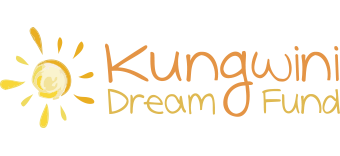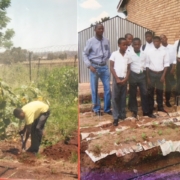Abstract
Objectives: This is a pilot project that aims to reduce the barriers to health care, learning and development, as well as promotion of essential health awareness and behaviour which will have a direct impact on a child’s school performance, absenteeism and overall health. There are many barriers which restrict health care, learning and development and these include transportation, lack of financial resources, language and cultural differences, poor nutrition, poverty, and disabilities including gross loco-motor dysfunction, impaired vision or hearing, and environmental factors such as poor water and sanitation. These all negatively impact the overall development of children and youth.
Setting: A government operated school for LEARNERS WITH SPECIAL EDUCATION NEEDS (LSEN) in Kungwini (Bronkhorstspruit), Gauteng, South Africa.
Design: Social, educational and medical records were reviewed with the educator and learners followed by a complete physical examination to formulate a needs assessment.
Subjects: Subjects (mean age 12.9 years) were 34 learners who were attending the school with a learning disability (admitted either as a slow learner, mental retardation, delayed milestones, intellectually handicapped, ADHD, reduced attention, forgets easily and repeating grades, as a admission diagnosis on the medical forms from the attending physician and referring school’s forms) at the ratio of 1:3 female/ males. Interviews were conducted by the educators who helped in the interpretation and communication with their learners, and expressed their concerns with the education of the learners. These educators were immensely resourceful for social and educational data, and comforted the learners during the assessments.
Main Outcome Measures: Data for 34 learners was reviewed with 7 educators over 5 assessment visits during February 2012. Assessment needs included demographic data, parental status and occupation, developmental history, (pregnancy, birth and milestones), medical and surgical history, disability description (from the referring physician), use of appliances, independence of ADL’s (activities of daily living), nutritional assessment, developmental assessment for learning disabilities, school attendance, physical activities, child abuse risk, sleep problems and stressors, sanitation assessment, health education and safety needs, immunizations, vital signs, visual, hearing and dental screening a neurological status assessment and a complete physical assessment excluding a genital examination. Urinalysis was performed for each learner. Educator concerns were noted and discussed. The data was assessed for short and long term needs, remedial actions and barriers to the suggestions.
The home language of the learners sometimes differed from the first language at school (Zulu). Communication in the second language (English) was generally poor. The overwhelming majorities of learners were happy to be studying at this school and preferred to stay on as they were not bored at this school due to the interactive educators or stressed by the demands of the mainstream schools.
Results: As predicted, there were many barriers which restricted learning and development and these included:
A learning disorder was classified according to the special needs in reading, written expression, mathematics, motor skills, communication and pervasive development.
Nine of the 34 learners (26.4%) did not fulfill the criteria of a learning disorder. They were referred as slow learners, mild mental retardation, muscular dystrophy, or other medical condition not conducive to the mainstream school education. They demonstrated average or above average performance in class with the educators. This group was either misplaced, misdiagnosed or had improved from their original condition.
Social conditions such as inadequate parenting, ill, deceased or no parents, unstable homes, absenteeism due to illness, sleep deprivation due distances in transportation, lack of financial resources, language and cultural differences.
Fourteen (41%) learners had social conditions impairing their educational development as outlined above. Some learners carried the burden of prior abuse, desertion, and being cared for by a teenage sibling. One learner was sleep deprived and underperforming at school as he had two part-time jobs after school to supplement his finances.
Medical conditions included HIV/AIDS ( some were on treatment and some were unscreened but suspicious of), hearing deficits ( wax in ears, untreated nerve conduction defects), vision deficits (lack of glasses, trachoma), mood disorders, congenital abnormalities ( hydrocephaly, craniofacial disorders), neurodegenerative disorders, cerebral palsy, respiratory disorders (asthma, tuberculosis) and disabilities including gross loco-motor dysfunction ( muscular dystrophy and arthrogryposis). These all negatively impacted the overall development of the learners. Environmental factors such as poor water and sanitation had no impact.
There were 30 (88%) learners with active health conditions impacting on their education. These are described above. Most learners need immediate and long term interventions to reduce their burden on education. One learner is progressing to blindness while awaiting corneal transplant surgery for the past one year. Learners with wax in their ears were classified as hearing impaired with learning deficits. Learners with global cognitive disorders required appropriate long term institutionalization and personalized care that is not possible at this institution.
Nutritional assessments were mostly satisfactory except for an obvious reduction in BMI in children inflicted by HIV/AIDS. BMI assessment in children is not always reliable.
The potential for abuse exposure was not apparent at present. However, two students have a history of sexual abuse by the parent or guardian.
Health educational was lacking in the areas of water and fire safety. Fire emergency planning and swimming were not known or practised by most students. Risky behaviour such as the effects of smoking, alcohol use and substance abuse were unknown to the students who always denied their use of these substances.
Immunizations were not documented in some records and poorly completed on the attending medical practitioner’s form.
The developmental histories were most uninformative. Almost all medical forms were completed as “delayed milestones” without any description of any of the milestones assessed or inquired.
The educators showed concern in the following areas:
- Overcrowding. There were about 25 learners with special education needs for each educator. This ratio was overwhelming the abilities of the educators.
- The ‘Inclusion Policy” of the Department of Education and the Ministry hampers the needs of the learners. Learners with mild mental retardation were classed with the severely and profoundly retarded learners, resulting in a disparity of educational needs and goals for the educators to achieve in one class.
- Disruptive behavior by learners with an inability to set limits by the educator resulted in an escalation of the learners behavior and attitude to the educators.
- There needs to be a clearer exit strategy for the learners who have either improved, were normal or had reached an age into adulthood. Some learners were more than 30 years old and were integrated with very young learners with different needs.
- Vocational Co-op programs to introduce the learners to industry and societal services need to be enhanced.
The following recommendations may alleviate the barriers to educational development at this institution, and could be a model for other such institutions:
- Admission criteria. The admission and medical criteria for an acceptance of a learner to the school with special needs has to be clearly defined. The medical form completed by the medical practitioner must include a detailed birth and developmental history, learning developmental deficits, past medical history, individual immunizations, screening for visual and hearing, detailed physical and mental status examination, medical and rehabilitation needs and identity of the practitioner. An example of the form is attached. This information is imperative in appropriately providing for the learners global needs and facilitates the rapid rehabilitation of the learner. If more details are needed, this should be requested from the medical practitioner before placement of the learner. The placement committee, the rehabilitation staff including the occupational, speech and physical therapists, and the psychologists must meet as the admission committee to correctly review the needs of each learner, and review them with the parent or guardian prior to admission.
- Transition Class to the mainstream school. A special class focussed on preparing learners who have improved or were misplaced needs to be established to emotionally, mentally and physically speed up integration and a return into the mainstream school. This would alleviate the overcrowding by this group of learners. A quarterly review meeting by the placement committee on all learners would monitor the progress of these learners objectively thereby maintaining the optimal remedial measures.
- Learners in need of medical attention and services which inhibit their development must get the attention immediately. A failure to do these handicaps their progress as long as the condition persists, results in overcrowding of classes, and poses a serious a risk of spreading the disease to other learners and educators.
- Poor parenting and other parenting issues must involve the Department of Social Services and their strategies to address these issues including provision of parenting classes. All learners not attending classes must provide a medical certificate for their absence.
- Educator frustrations. Group meetings with the educators on a weekly basis would allow for their concerns to be shared with possible solutions. A monthly meeting providing an incentive for the educators has been established.
- Health education safety and promotion. Learners would benefit from education specific to the effects of risky behavior including smoking, alcohol use, substance abuse (glue sniffing and marijuana), and the risks of operating a motor vehicle. Classes promoting safety during a fire and swimming lessons would reduce the lifelong risks of bodily harm and death.
- Physiotherapy, Speech and Occupational therapy services. These were not available or accessible to the learners. These therapeutic modalities are critical in the rehabilitation of learners with special needs, and the absence of these therapies were delaying and retarding the progress of the learners.
Conclusions
The SHIP Project has achieved its objective in a limited setting of a school for special education needs. It has demonstrated:
- The incidence of children with health needs
- The spectrum of health needs
- Practical screening measures
- Practical remedial measure
- Barriers to remedial measures
- Impact of project on student health and education
- Impact on educators and school.
- Strategies to improve services for children health and education
The project will assist the school community in addressing its health and education needs, and advance public education, and social and economic development. This success will then be shared with potential Canadian financial donors and physicians who will be encouraged to support with financial and medical resources. This pilot project is hoped to be a model to assist children in other schools and cities in South Africa.
Acknowledgements
Councillor Jabulani S. Mabona – Chief whip of Council, and Mr.Peter Nkosi of the City of Tswane, who encouraged and endorsed the project, introduced me to the schools, educators, and the officers of the City of Tswane, and who closely monitored and supported my progress.
MEC for Finance Mr. Mandla Nkomfe who encouraged and endorsed the project during the school opening campaign in January, 2012.
The principal Mr. A. Mthimkulu, educators and staff of the Sizanane LSEN School for their immense dedication and commitment to the children of South Africa.
Dr. Sethosa, Mrs. Khabanyani and Mr. Herbert Nkosi of the Department of Education for their encouragement, assistance and advice for the project.
Late Comrade Steve Bhiko whose personal words echo daily: To empower the mind of every child in Africa.
Mrs. Kathy Szarka and Ameena Nanabhai for their administrative and moral support.
Disclosure / Conflict of Interest; Dr. Mohamed Rashid Goolam Hussain has received unsolicited donations for this project from Mrs. Violet and the Late Donald D’Albenas, Ricky and George Michals, and Luc Guillemenault of Ontario, Canada.
Cc. Councillor Jabulani S. Mabona, Mr. Peter Nkosi. Dr. Sethosa, Mrs. Kabunyani and Mr. Herbert Nkosi, Mr. A. Mthimkulu, Mr. Mandla Nkomfe.

